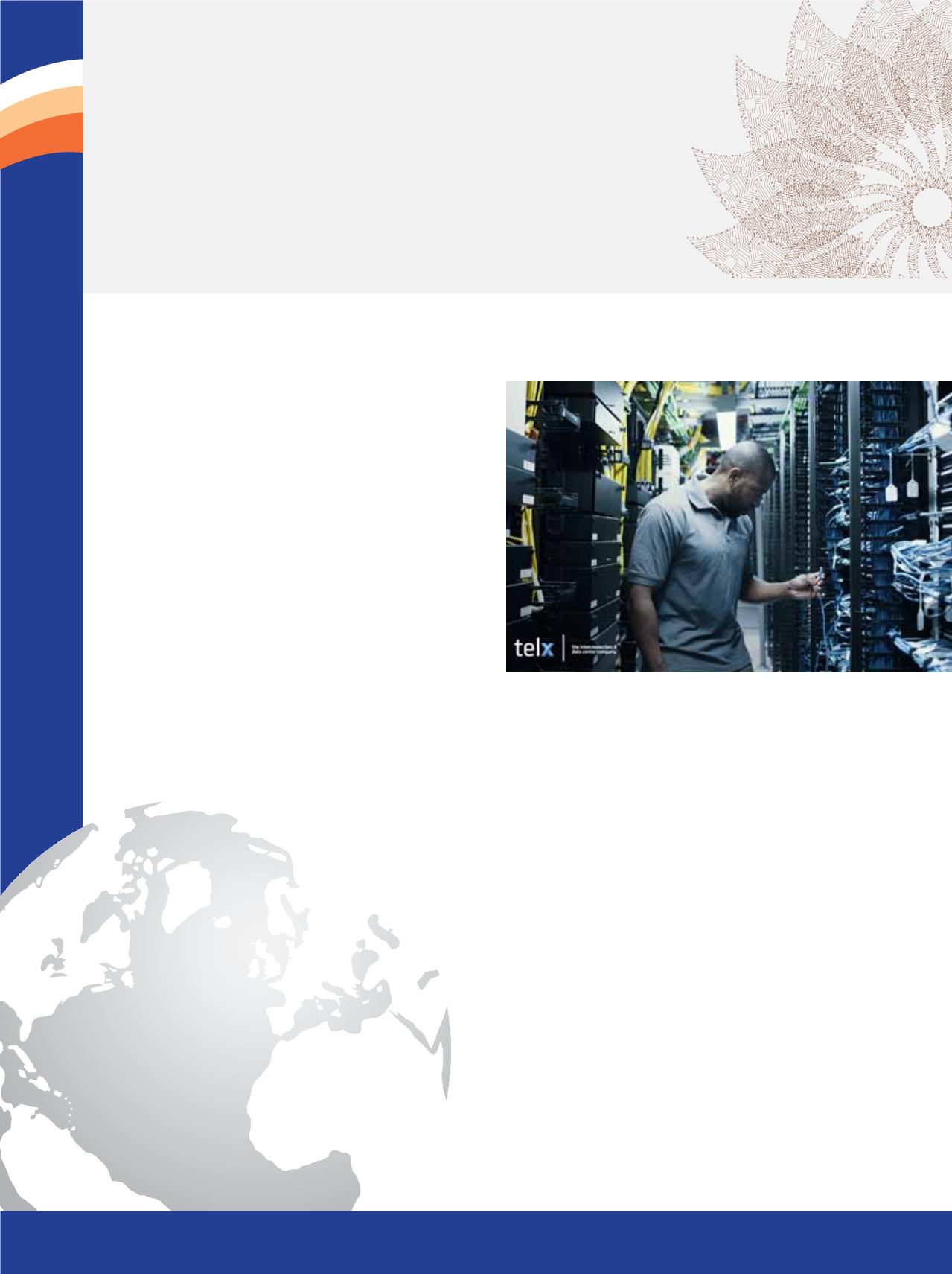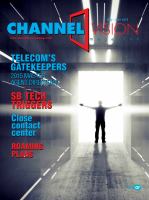

Networked Planet
PACIFIC TELECOMMUNICATIONS COUNCIL
Pacific Telecommunications
Council | 914 Coolidge Street Honolulu,
HI 96826-3085 |
www.ptc.org| Phone: +1.808.941.3789 x124 | Fax: +1.808.944.4874 | E-mail:
ptc13@ptc.orgPacific Telecommu
nications Council | 914 Coolidge Street Honolulu,
HI 96826-3085 |
ptc.org| Phone: +1.808.941.3789 | Fax: +1.808.944.4874 | Email:
ptc15@ptc.orgTopics
Wireless and Mobility / Apps and Mobile Gaming
Cloud,
Big Data, and the Internet of Things (IoT)
Cybersecurity
Policy Challenges for a Networked Planet
Satellite
Submarine Cable
Software-Defined Networking (SDN)
Monetization
Mobile / Untethered Spectrum
Register
today at
ptc.org/ptc15
18–21 January 2015
|
Honolulu,
Hawaii
Hilton Hawaiian Village
®
Waikiki Beach Resort
registration deadline
:
31
october
2015
Editor’s Note:
The views expressed in this article rep-
resent those of the author and Telx and not necessarily
PTC or ChannelVision magazine.
Globalization, enterprise mobility, the Internet of
Things, big data – none of these critical trends in cor-
porate competition and computing would have been
imaginable only a decade and a half ago. Big data finds
its roots in business intelligence, which has been around
for a while, and enterprise mobility arguably began when
the first standard cell phone hit the market.
However, the scale, power, speed and level of competi-
tion seen on the global stage today, specifically as they
relate to these and other trends, would simply not be fath-
omable to a professional back in 2000. Now, they are very
much realities that all organizations, regardless of industry
or region, must embrace and handle proactively.
One of the key themes here is the convergence of
information and communications technologies into more
holistic and centralized environments. For example, think
about how unified communications systems are increas-
ingly hosted in cloud computing environments. Going a
step further, much of the average corporate IT budget is
now being directed toward software defined networking
(SDN) and cloud computing assets.
None of the trends mentioned above would really b
possible, or at least come with the capability to thrive,
had legacy IT still been the only real form of infrastructure
when they emerged. This includes globalization, as infor-
mation sharing and cross-border competition would sim-
ply not be where it is today without the robust digital envi-
ronments to which so much of the world now has access.
For evidence, consider a
Data Center Knowledge
article from April 2015, which cited 451 Research’s pro-
jections that the colocation data center market will grow
significantly in the next two years. This will result in 40
million square feet in global footprint growth, and rev-
enue will increase from $22.3 billion this spring to $36
billion by 2017, a 50 percent increase in revenues over
just two years.
If that is not enough, ESG Research’s Jon Oltsik pub-
lished an article this May in
Network World
to describe
some of his firm’s findings. They included an estimate
that 68 per nt of mid-market and large enterprise firms
are using software-as-a-service currently, while 41 per-
cent are using infrastructure-as-a-service, and 35 percent
have deployed platform-as-a-service. Cloud computing
markets are flourishing, to say the least.
Finally, it is not just nameless groups of organizations
and enterprises making changes to their ICT infrastruc-
ture. Also in April, Verizon released a public statement
regarding its work with several major ICT players to
migrate to a software defined networking infrastructure.
Considering the fact that this is one of the more powerful
telecommunications players, it should be clear that the
market is transforming from top to bottom.
Most of the changes taking place are truly needs-
based, as service providers and telecom companies need
to handle price wars, to meet expectations of increasingly
demanding clientele and to navigate more competitive
landscapes than ever before.
Dynamic and futuristic cloud ecosystems are being
erected, SDNs are becoming vital to everyone’s future
growth, colocation is gaining serious traction and global,
borderless competition and corporate operations are now
realities. It should not be surprising the already massive
and accelerating demand for these modern components
of infrastructure is ushering in a new era of competition
By
Anthony
Rossabi
PTC
Corner
The Accelerating
Evolution of ICT Infrastructure
INTERNATIONAL AGENTs
SECTION
26
Channel
Vision
|
May - June 2015
















